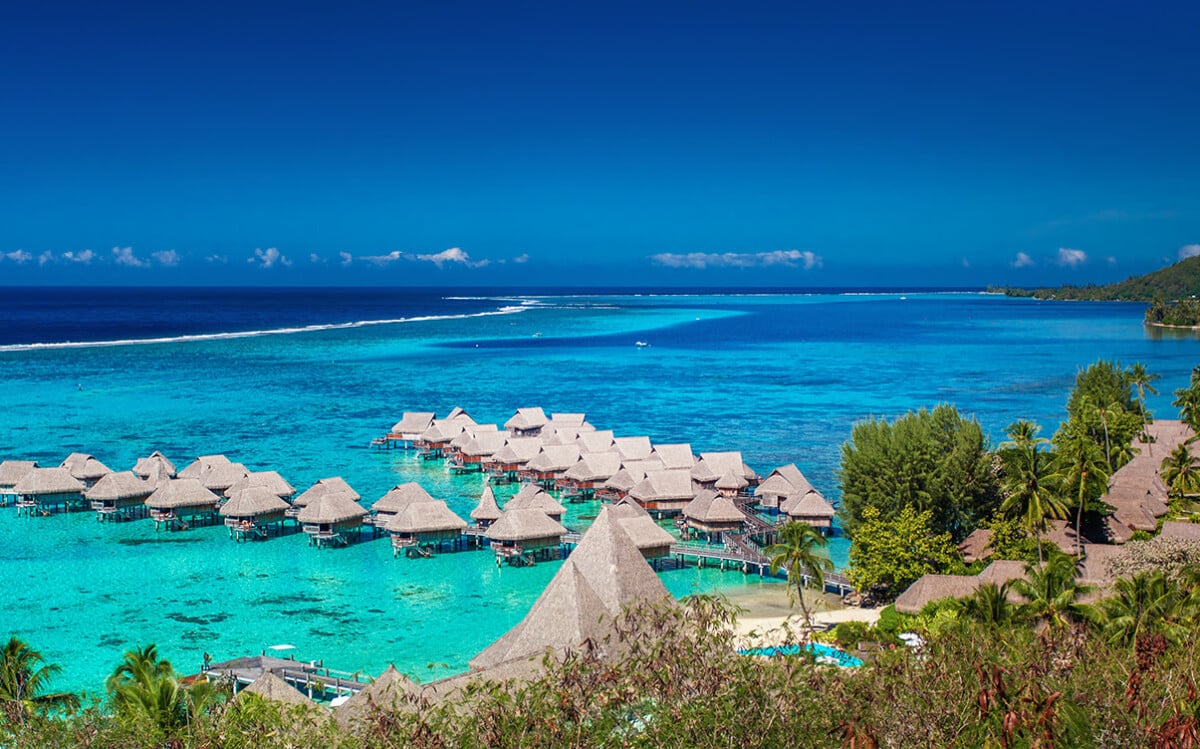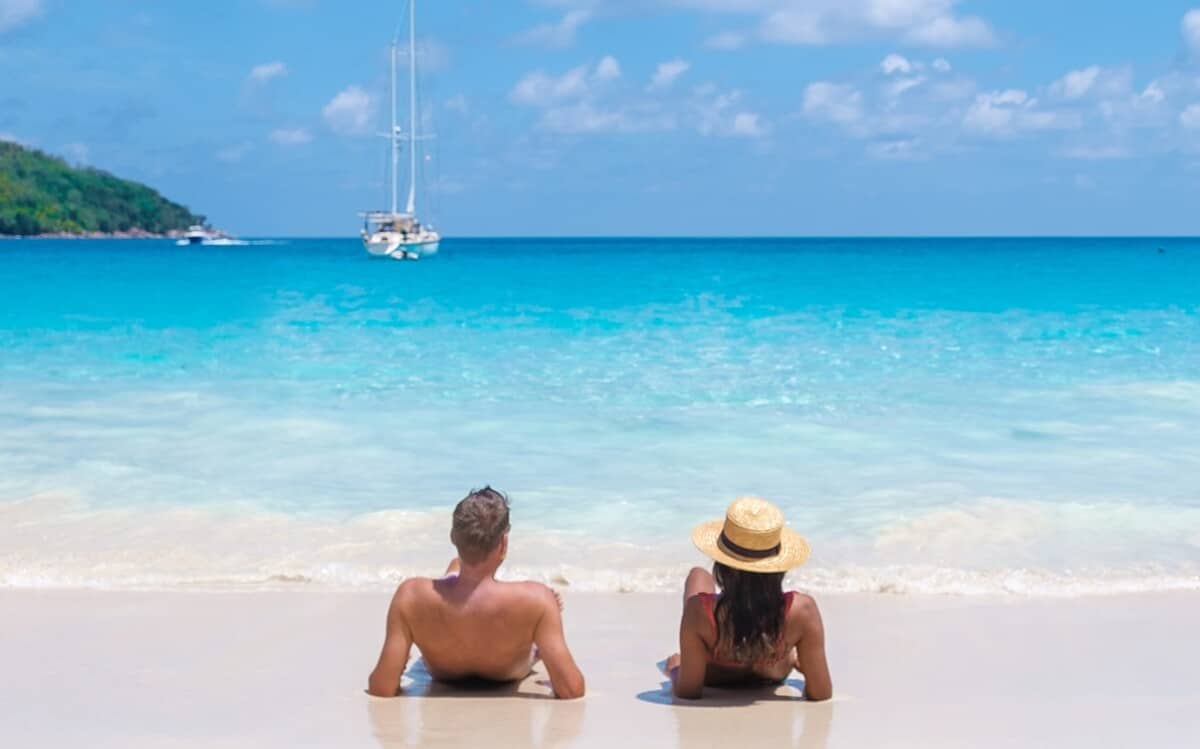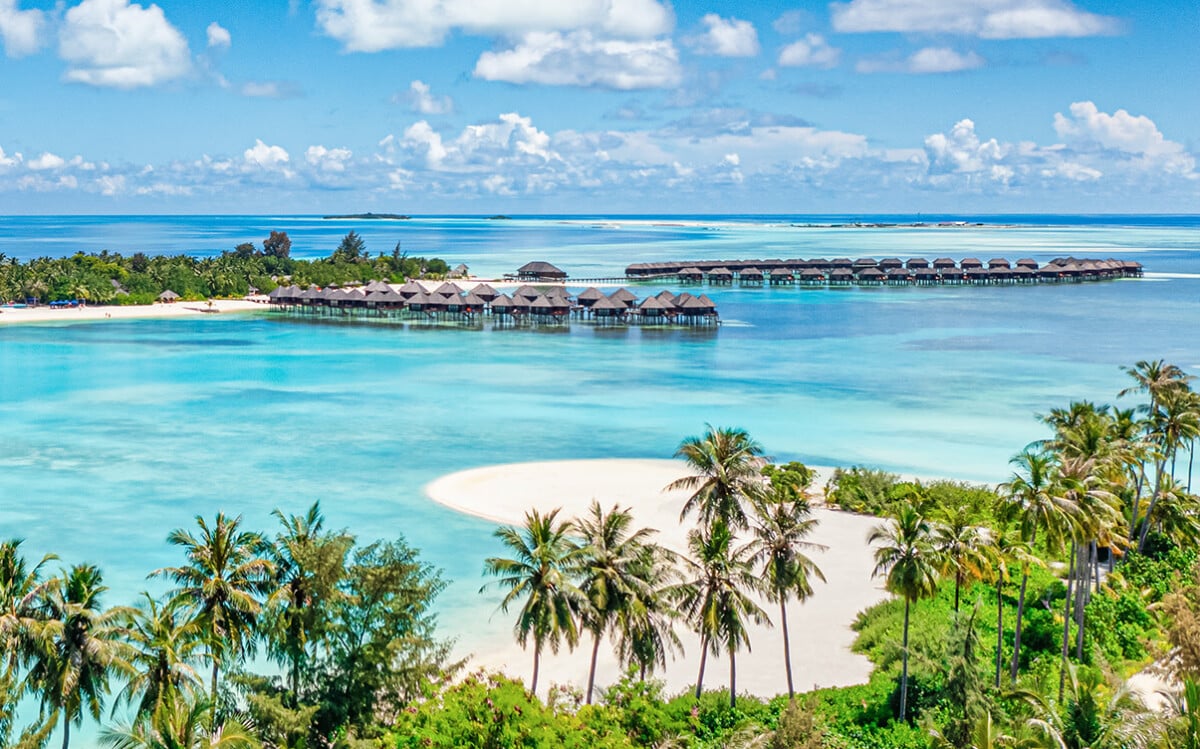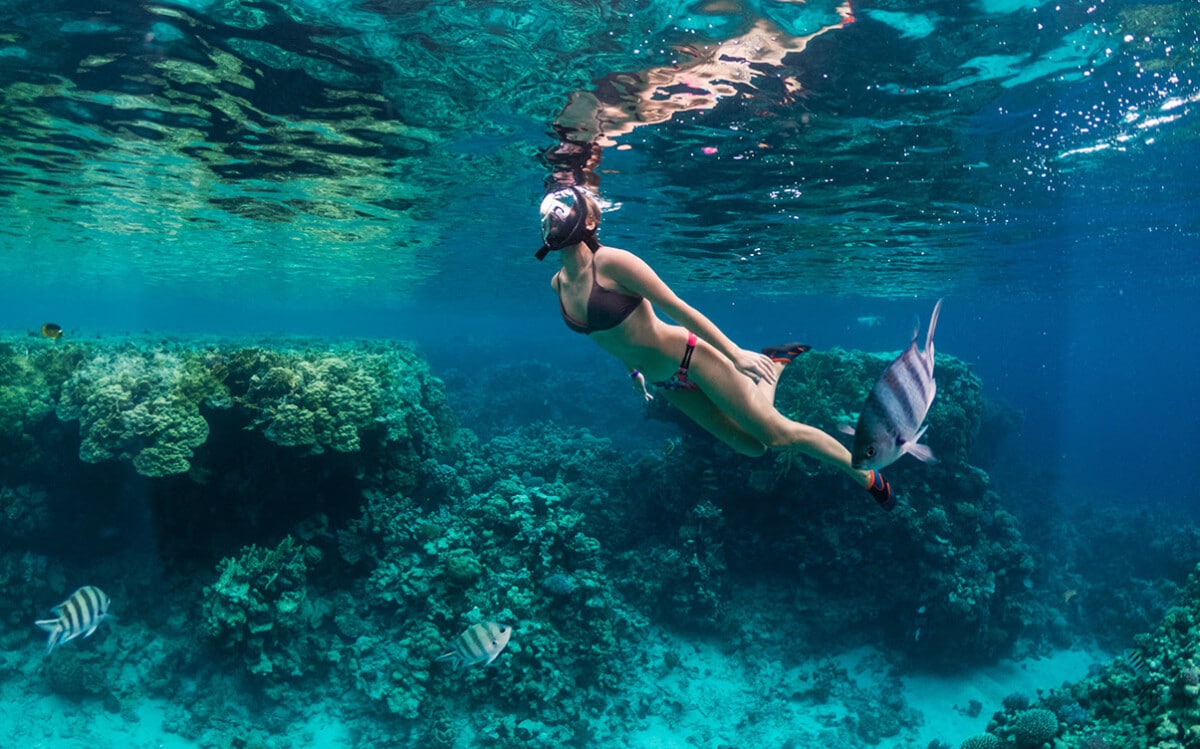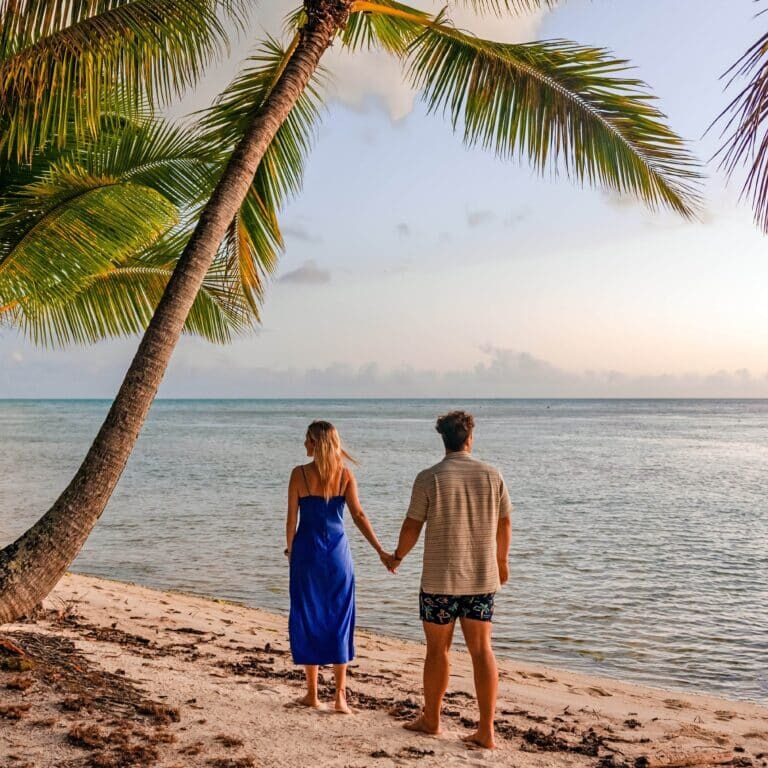Diving into Paradise: Tahiti and Its Captivating Archipelago
Disclaimer: This post may contain affiliate links. Please see our Disclosure Policy and Advertiser Disclosure for details.
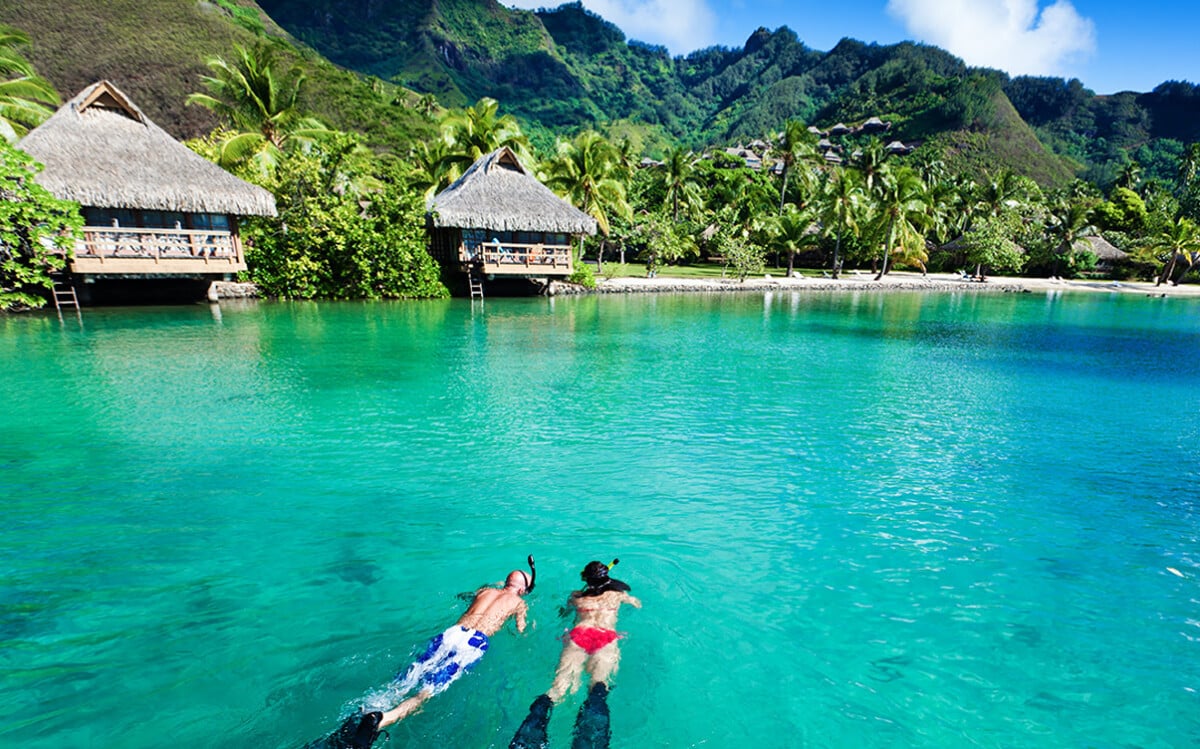
If you were to think about culturally popular tropical island destinations, there are a few names that are going to be at the top of your list. One of them is the ever-famous Tahiti and with good reason.
Tahiti is the largest single island in the Windward group of islands, themselves part of the Society Islands, all part of French Polynesia, located off in the middle of the Pacific Ocean, around halfway between South America and Australia.
French Polynesia is made up of 121 islands and atolls broadly divided into five groups. Of those, only 75 are inhabited, with 70% of the population located on Tahiti itself. It’s where the capital of French Polynesia, Papeete, is located.
While the history of French Polynesia is unique and fascinating, it’s not why we’re here today. We’re here because Tahiti is a fantastic place to explore as a tropical getaway, and it’s an incredible home base for further exploration of the surrounding islands, both above and below the waves. It’s honestly captivating, and once you’ve visited, you’ll never forget it.
How to Reach Tahiti
As a relatively isolated chain of islands deep in the Pacific, there’s no two ways about it: you’re going to have to fly in. Fortunately, since Tahiti is a very popular destination, there are flights heading in and out all year round, leaving from many different locations.
Your destination airport is Faa’a International Airport, and you can reach it from many different hubs, including airports in Los Angeles, Japan, and Australia. It’s about a nine-hour flight from LAX and a five-hour flight from Hawaii. Those flights can be fairly expensive, but as one of the world’s foremost tropical destinations, it’s not the only expense you’ll be facing for a trip like this.
The Best Time to Visit Tahiti
As a tropical destination near the equator (about as far south of it as Hawaii is north of it), the weather is incredible and balanced all year round. From November to March, it’s “summer” in Tahiti, where the weather trends on the higher side of temperatures and humidity, and you have a slightly higher chance of rain each day. The rest of the year, from April to October, is the winter dry season, with slightly cooler temperatures and less humidity.
The winter season – particularly the peak in July and August, is generally considered the best time to visit if you want to spend time in the water. The water visibility is best, the waters are calmer, and it’s more pleasant for sailing. That said, the lowest temperatures are rarely below 75F, and the highest highs are seldom above 85F, so you’re pretty much sitting in a sweet spot no matter when you visit.
Things to Know About Visiting Tahiti
There’s a lot to consider when you’re planning a trip to Tahiti, so let’s get some of the more important details out of the way.
First, while the weather and the water are very pleasant, there are a few annoyances you’ll need to deal with. You don’t have to worry about spiders or snakes, but you do have mosquitos and the no-no fly, which have annoying bites. There are also a few underwater tropical hazards, like corals or the rare rockfish, which you need to watch out for.
Language-wise, the three main languages spoken on the islands are Tahitian, French, and English. Tahitian is surprisingly easy to get the hang of, at least for enough simple words and phrases to get around, and English can carry you the rest of the way.
As far as currency is concerned, Tahiti and all of French Polynesia use the French Polynesian Franc, which has a fixed exchange rate with the Euro at 119.33 to 1. The rate fluctuates with the USD, but it’s always in a relatively similar range based on how stable both the Euro and Dollar end up being in broad terms. That said, most tourist destinations accept your typical credit cards, so cash is only necessary for the more remote areas and smaller venues you might visit.
Note: Unlike some places we’ve visited, tipping isn’t customary in Tahiti. You can still tip for exemplary service, but you’re not required to do so.
You also don’t need to get any special vaccines or shots before visiting, as long as you’re coming from the USA. Just take your usual precautions against things like airplane illness, seasickness, and travel colds.
Where should you stay? That’s up to you. You have pretty much any possible level of accommodation on the islands, from high-level luxury resorts literally on the water or poised with incredible ocean views on the shoreline to an authentic island experience from renting a guest house from a resident further inland. During peak season, the hotels and resorts are likely to be booked up, especially around the capital, but the further out you get, the more easily you’ll find a place to stay.
Make sure to book early; it’s not uncommon for entire weeks at a time to have every last room on the island booked up, and you don’t want to have to rely on a cancellation.
Things to Do on the Shores in Tahiti
While the bulk of the main draws of Tahiti lie under the waves, there’s still a lot you can do on the shores without getting your feet wet.
For example, you can explore the various towns and villages scattered throughout the Society Islands. Tahiti and the whole of French Polynesia have a fairly robust public transit system. You can take a bus anywhere on the main islands with ease and rent a bicycle to travel anywhere else you want to go off the main lines. Transfers to other islands are regular and easy on boats. While you can rent a car or a motorcycle, it’s really not necessary.
You can also explore deeper in the wilderness on some of the islands. There are a number of companies offering safari tours where you take a 4×4 through the jungle, usually for around $150 per person.
For more casual, less motorized adventures, there are street food tours and hiking everywhere. As long as you have the bug spray and some good hiking gear, you can travel the jungle and see all manner of tropical, exotic, and beautiful plant life and wildlife. A tour to visit Afareaitu Waterfall is incredible. Other hikes, both guided and unguided, can take you all around the main islands like Tahiti itself and Bora Bora. There are even hikes you can only get to by boat!
If you’re an avid hiker and want something a little more challenging, possibly the best hike of all on the islands is the hike to the peak of Mt. Aorai, the highest point on the island. It’s quite near the capital, it’s fairly difficult, and while it’s well-signposted, a guide can still help out. The views, though, are so very much worth it, we can’t overstate it.
There are also a variety of boat-based tours you can take, though most of them expect you’re there to do some diving, so finding one that’s purely dry is going to be a challenge. If you can find them, there are some absolutely gorgeous tours of untouched beaches and shorelines that make for incredible photo ops.
Things to Do Below the Waves in Tahiti
Let’s be real here; if you’re visiting Tahiti, it’s because you’re there for the water adventures. Diving and snorkeling, whether you’re a few yards off-shore or way out into the atolls, reefs, and lagoons, are the primary attractions.
The undersea wildlife is frankly incredible. You can go whale-watching above and below the waves and, in some cases, even have (relatively) up-close encounters with the majestic creatures. You can dive with schools of tropical fish and, yes, sharks! The corals are all fantastic, and the crystal-clear waters make visibility incredible.
Swimming with the whales is an experience unlike any other. Humpback whales visit the archipelago in the summer months between July and November, and you can view them through snorkeling tours. There are specific rules about swimming with them to avoid disturbing them, but it’s pretty easy to follow.
The coral reefs are, to put it mildly, unearthly. They look like you’re swimming through cartoon depictions of corals, the kinds of things you only see behind inches of glass in an aquarium, but you’re right there in real life. Corals are struggling with climate change and the issues humans have caused in the oceans, but there are still beautiful reefs all around Tahiti and the surrounding islands.
Sharks are also present pretty much everywhere, but nowhere as incredibly numerous as in Fakarava. Under the waters here is a steep coral wall, home to countless tropical fish and an even more countless number of sharks swimming through them looking for a meal. The sharks are generally harmless to humans, and it’s an incredible sight to see.
If you’re interested in the conservation efforts meant to preserve the natural biodiversity and care for the wildlife around the islands, you can also visit Moorea Sea Turtle Care Center, where you can take a guided tour and see what turtle conservation is all about.
As for water sports, many tour groups offer jet ski tours and even hybrid tours, with some time on 4x4s and some on jet skis. You can also go sailing, take a pontoon boat out to sea, or even go surfing in some of the world’s best waves.
Tips to Make the Most of a Tropical Vacation in Tahiti
First and foremost, make sure you’re well-supplied with everything you’ll need.
- Sun protection. As a sunny tropical destination, Tahiti’s biggest threat is the sun; make sure you have sun protection, including sunscreen, sunglasses, a sunhat, and even skin-covering light clothing for when you’re out on the water. Your skin will thank you.
- Bug spray. As mentioned above, mosquitoes and biting flies are the primary annoyance when you’re above the waves, so a good bug spray goes a long way.
- Electricity converters. Tahiti uses the European 220v 60hz in general, and while some hotels may offer the American standard as well, you’ll be better off with the converters on hand.
- Hiking gear. If you’re planning any overland adventures, good hiking gear is a must. At the very least, make sure you have good shoes, but decent hiking clothes and a pack to hold water and other supplies are essential.
- Water gear. The main draw of Tahiti is the underwater experiences, and while you can rent things like SCUBA gear and snorkeling gear all over the islands, bringing something you’re comfortable with and fits you can be a great idea. At the bare minimum, swimsuits and other basic beach gear are a must-have.
- Photography gear with waterproofing. Tahiti is one of the most photogenic places in the world, but it’s also heavily water-focused, so you need your gear to be waterproof. An underwater camera is incredible to have for diving excursions.
Secondly, be prepared to be flexible and enjoy what you can. Tahiti is generally an expensive place to get to and can be expensive to stay in because it’s a world-famous tropical island getaway. It’s the location of countless marriages and honeymoons, and nearly everyone who doesn’t live there is there to make memories.
Above all else, remember that Tahiti is only the fantastic tropical getaway that it is because the thousands of people who visit it every year are able to leave it as good as they found it. Do your best to practice Leave No Trace, follow local rules, and avoid damaging the ecosystem as you enjoy it.
Just make sure to respect others, including the locals, and do your best to make your own positive memories. Sometimes, plans might not work out; a stray rain show can delay or cancel a boat trip or tour, and any dive where you’re seeking wildlife has the possibility of being skunked because the wildlife doesn’t play according to our schedules. Still, no matter what you do or where you turn, there’s bound to be something incredible to see.
You may also enjoy:

